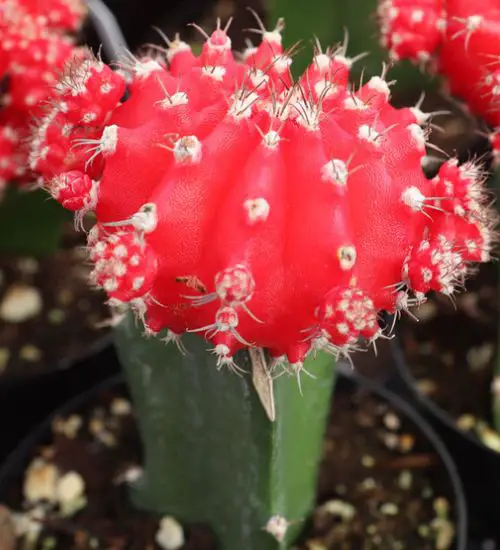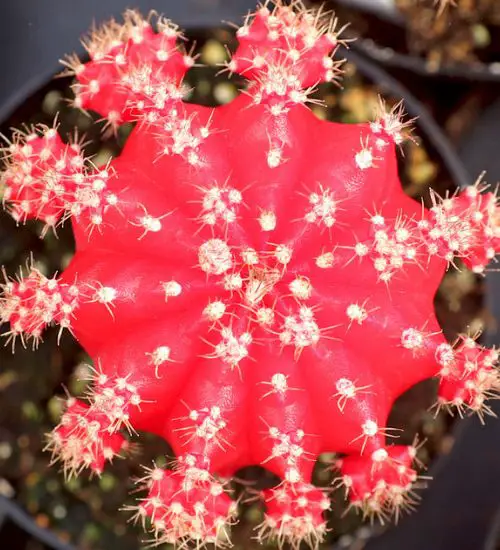Sun: Partial sun to partial shade
Water: Typical water needs for a succulent
Temperature: Zone 10a from 30° F to 35° F (-1.1 ° C to 1.7° C)
Winter Survival: Not cold hardy
Propagation: offsets, grafting
Flower: in the summer
Flower Type:
Toxic: Generally non-toxic to humans and animals
Dormant: winter
Space Requirement: Indoors & Outdoors
Common Problems: Plants may rot if overwatered, pests
Where to buy Gymnocalycium mihanovichii?
Basc Care for Gymnocalycium mihanovichii
Watering
Regular watering period should be every 2 weeks
What you need to remember is that this type of succulents needs to be watered for every 2 weeks
Fertilizing
Do not fertilize during winter as the plant is dormant.
Sun & Location Requirements for "Moon Cactus"
When planting Gymnocalycium mihanovichii, be sure to find a spot that gets partial sun and shade for optimal growth. A good rule of thumb is to provide four to six hours of direct sunlight per day with some protection from the midday heat.
Gymnocalycium mihanovichii is not cold hardy and does not survive in freezing conditions. However, there are certain strategies that can be used to help the plant thrive despite the chill of winter. Proper drainage and insulation are essential for succulent X during periods of extreme cold. Placing a layer of mulch or gravel on the soil around the plant can also help keep it warm.
Any succulents in the group will need a medium space to grow. You can place your pot at your table or window. Since this plant needs more space than mini succulents, you should consider do not plant them together with other succulents/plants.
Gymnocalycium mihanovichii also benefits from some indirect light throughout the day as well, so make sure you give it enough space to soak up light without becoming too exposed to heat.
Propagation
Succulents can be propagated easily by taking offsets from the mother plant and replanting them in fresh soil. The offset will eventually grow into a new succulent that is identical to its parent.
Grafting is an effective way to propagate Gymnocalycium mihanovichii. It involves carefully cutting and splicing two plants together, creating a strong fusion between the two. This ensures that the plant can grow in a healthy manner, with minimal risk of damage to either part.
Toxicity

Gymnocalycium mihanovichii is not known to pose any significant health risks, as it is not considered to be toxic. However, it is best to keep the plant away from young children and pets, as they may ingest some of the parts of this plant that could contain toxins which can cause mild skin irritation.
Pests and Diseases
Gymnocalycium mihanovichii can be affected common pests and diseases like most of the other succulents such as mealybugs and Red spider mites.
If you do spot any of pest signs, you can treat your succulent using below methods.
- Mealybugs: quarantine, clean infected plants, soapy water.
- Red spider mites: Quarantine, clean your infected plants, treatment with a systemic insecticidal/soapy water.
Besides that, to prevent serious health issues from happening, keep your succulent in a well-ventilated area and check it regularly for any signs of pests or health problems.


